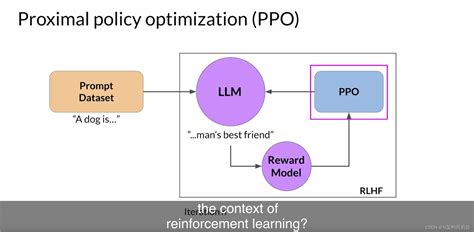Intro
Compare Insurance HMO vs PPO plans, understanding network differences, out-of-pocket costs, and coverage flexibility, to choose the best health insurance option for your needs, considering deductibles, copays, and provider choices.
When it comes to choosing a health insurance plan, two of the most popular options are HMO (Health Maintenance Organization) and PPO (Preferred Provider Organization). Understanding the differences between these two types of plans is crucial to making an informed decision that suits your healthcare needs and budget. In this article, we will delve into the details of HMO and PPO plans, exploring their benefits, drawbacks, and key features to help you make the best choice for yourself and your loved ones.
The importance of selecting the right health insurance plan cannot be overstated. With the rising costs of medical care, having adequate coverage can mean the difference between financial stability and bankruptcy. Moreover, the right plan can provide you with access to quality healthcare services, ensuring that you receive the necessary treatment and preventive care to maintain your health and well-being. Whether you are an individual, a family, or an employer looking to provide benefits to your employees, understanding the nuances of HMO and PPO plans is essential to navigating the complex world of health insurance.
As you begin your search for the perfect health insurance plan, it is natural to feel overwhelmed by the numerous options available. HMO and PPO plans are two of the most common types of health insurance, each with its unique characteristics, advantages, and disadvantages. By comparing and contrasting these plans, you can make a more informed decision that aligns with your healthcare needs, financial situation, and personal preferences. In the following sections, we will provide a detailed analysis of HMO and PPO plans, including their benefits, working mechanisms, and key differences, to help you choose the best plan for your specific circumstances.
What is an HMO Plan?

Benefits of HMO Plans
HMO plans offer several benefits, including lower premiums, comprehensive coverage, and a focus on preventive care. By limiting the network of providers, HMO plans can negotiate better rates with healthcare providers, resulting in lower costs for plan members. Additionally, HMO plans often emphasize preventive care, such as routine check-ups, screenings, and health education, to help members maintain their health and prevent illnesses.Drawbacks of HMO Plans
While HMO plans have their advantages, they also have some drawbacks. One of the main limitations of HMO plans is the restricted network of providers. If you need to see a specialist or receive care from a provider outside the network, you may face higher out-of-pocket costs or even be denied coverage. Furthermore, HMO plans often require members to obtain a referral from their PCP before seeing a specialist, which can delay access to necessary care.What is a PPO Plan?

Benefits of PPO Plans
PPO plans offer several benefits, including greater flexibility, access to a wider range of providers, and no requirement for referrals. With a PPO plan, you can see any healthcare provider you choose, whether they are in-network or out-of-network, although you will typically pay more for out-of-network care. Additionally, PPO plans often have a larger network of providers than HMO plans, giving you more options for medical care.Drawbacks of PPO Plans
While PPO plans offer more flexibility than HMO plans, they also have some drawbacks. One of the main disadvantages of PPO plans is the higher cost. PPO plans typically have higher premiums, deductibles, and copays than HMO plans, which can make them less affordable for some individuals and families. Furthermore, PPO plans often have more complex billing and reimbursement processes, which can lead to confusion and unexpected costs.Key Differences Between HMO and PPO Plans

Choosing Between HMO and PPO Plans
When deciding between an HMO and PPO plan, consider your individual circumstances, healthcare needs, and financial situation. If you prioritize lower costs and are willing to receive care from a restricted network of providers, an HMO plan may be the better choice. However, if you value flexibility and are willing to pay more for the freedom to see any healthcare provider, a PPO plan may be the better option.Factors to Consider When Selecting a Health Insurance Plan

Additional Tips for Choosing a Health Insurance Plan
Here are some additional tips to keep in mind when selecting a health insurance plan: * Research the plan's network and ensure that your preferred healthcare providers participate. * Review the plan's coverage and ensure it meets your healthcare needs. * Consider the plan's deductible, copays, and coinsurance to determine your out-of-pocket costs. * Check the plan's out-of-pocket maximum to ensure you are protected from high medical expenses. * Read reviews and ask for referrals from friends, family, or coworkers to get a sense of the plan's quality and customer service.Conclusion and Next Steps

We invite you to share your thoughts, questions, and experiences with HMO and PPO plans in the comments section below. Have you had a positive or negative experience with one of these plans? What factors do you consider most important when selecting a health insurance plan? Your input can help others make informed decisions and navigate the complex world of health insurance.
What is the main difference between HMO and PPO plans?
+The main difference between HMO and PPO plans is the network of healthcare providers. HMO plans have a restricted network, while PPO plans have a larger network and allow members to see providers outside the network.
Which type of plan is more flexible, HMO or PPO?
+PPO plans are more flexible than HMO plans, as members can see any healthcare provider they choose, without the need for a referral from a PCP.
What is the typical cost difference between HMO and PPO plans?
+HMO plans typically have lower premiums, deductibles, and copays than PPO plans, but may have higher out-of-pocket costs for out-of-network care.
